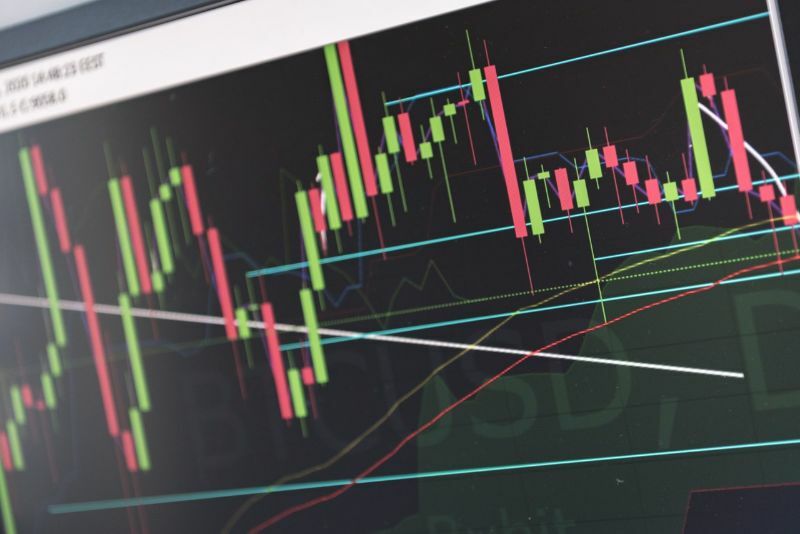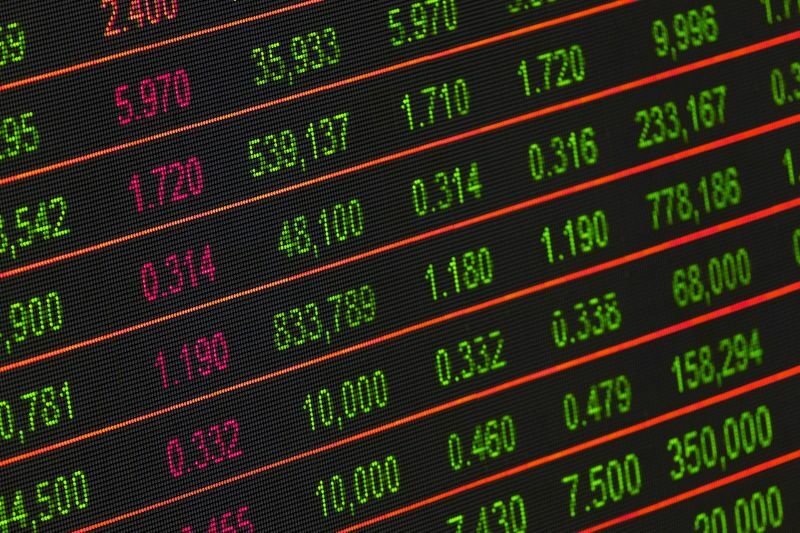Investing in dividend-paying stocks can help you establish a long-term investing portfolio. Investing in dividends might also give you a financial boost.
How do you start buying stock dividends?
Buying dividend stocks is simple:
- Find a stock that pays dividends. Many financial websites, as well as your online broker’s website, allow you to search for dividend-paying stocks.
How much do I need to invest to make $1000 a month in dividends?
Dividend income of $1,000 per month requires an investment of $342,857 to $480,000, with an average holding of $400,000. For a monthly dividend income of $1000, the exact amount of money you’ll need to invest depends on the stock’s dividend yield.
It’s how much money you get back in dividends for the money you put in. In order to compute the dividend yield, divide the annual dividend paid per share by the current market value of each share. You’ll get Y percent of your investment back in the form of dividends.
In order to speed up this process, you should look for “normal” stock yields in the region of 2.5 percent to 3.5 percent before looking for larger yields.
However, this benchmark was set prior to the global scenario in 2020, thus the range may change if the markets continue to move. It also assumes that you’re prepared to begin investing in the market while it’s volatile.
Here, we’ll keep things simple by focusing on quarterly dividends and dividend yields of 3 percent.
Most dividend-paying equities do so four times a year. You’ll need a minimum of three different stocks to get you through the entire year.
Assuming each payment is $1000, you’ll need to buy enough shares in each firm to earn $4,000 every year.
You can use this formula to figure out how much money you’ll need to invest in each stock: $4,000 x 3% = $133,333. To get a total portfolio value of roughly $400, 000, multiply that by 3. Especially if you’re beginning from scratch, it’s not a tiny sum of money.
Before you start looking for higher dividend yield stocks as a shortcut…
You may think that by hunting for dividend-paying stocks, you can shorten the process and lower your investment. Stocks with dividend yields greater than 3.5 percent are often seen as hazardous, so theoretically, this may be true.
The higher the dividend yield, the more likely it is that the corporation has a problem. The dividend yield is increased by lowering the share price.
Check out the stock discussion on SeekingAlpha.com to discover if the dividend is at risk of being slashed. Be sure you’re an informed investor before you decide to accept the risk, even though everyone has their own point of view.
The stock price usually falls further if the dividend is reduced. As a result, you’ll lose both dividends and the value of your portfolio. That’s not to suggest that’s always the case, so it’s up to you to decide how much risk you’re willing to accept in your career.
How much do I need to invest in stock to get dividend?
With an average portfolio size of $200,000, you’ll need between $171,429 and $240,000 in investments to earn $500 a month in dividends.
How much you need to invest in a $500-per-month dividends portfolio depends largely on the dividend yield you get from your investments.
The dividend yield is computed by dividing the current share price by the annual dividend paid per share. You get back Y percent of the money you invest in dividends. Return on investment is a dividend.
Focus on dividend stocks with a yield of 2.5 percent to 3 percent while investing in ordinary stocks.
One thing to keep in mind is that the stock market in 2020 and the beginning of 2021 was extremely volatile. As opposed to past years, the intended benchmark may shift slightly. Decide whether or not you are prepared to invest in a volatile stock market.
Estimate the amount of money you need to invest
Many dividend-paying companies pay out four times a year, or once every three months. With at least three quarterly stocks, you can expect to get a total of 12 dividend payments per year.
Estimate your investment per stock by multiplying $500 by four, which equals $2000 for the annual payout per stock. You’ll need to invest a total of $6,000 per year in order to cover the entire year’s dividend payments.
Assuming a 3% dividend yield, $6,000 divided by $200,000 equals about $200,000. You will put down a total of around $66,667 on each stock.
Can I live off of dividends?
For most investors, ensuring a secure and comfortable retirement is the most important goal. In many cases, the majority of people’s assets are devoted to that goal. However, after you’ve reached retirement age, surviving solely on your savings might be just as difficult as planning for a good retirement.
In most cases, bond interest and stock sales are used to make up for the rest of the withdrawals. The four-percent rule in personal finance is based on this fact. It is the goal of the four-percent rule to give a continuous stream of income to the retiree, while simultaneously maintaining an account balance that will allow funds to last for many decades. Wouldn’t it be nice if you could gain 4% or more out of your portfolio each year without having to sell any of your stock?
Investing in dividend-paying stocks, mutual funds, and ETFs is one strategy to increase your retirement income (ETFs). It is possible to enhance your Social Security and pension income with dividend payments over time. It may even be enough to maintain your preretirement standard of living. If you have a little forethought, you can survive off dividends.
How long do you have to hold a stock to get the dividend?
In order to qualify for the preferred 15% dividend tax rate, you must have held the shares for a specific period of time. Within the 121-day window surrounding the ex-dividend date, that minimal term is 61 days. An additional 121 days begin 60 days before the dividend payment date.
Are dividends paid monthly?
Although some corporations in the United States pay dividends monthly or semiannually, the majority pay quarterly. Each dividend must be approved by the board of directors of a corporation. The ex-dividend date, dividend amount, and payment date will then be announced by the corporation.
Are dividends worth it?
- The board of directors of a firm can award its present shareholders dividends, which are a discretionary distribution of profits.
- A dividend is normally a one-time payment to shareholders, but it can also be paid out on a periodic basis.
- There is a good chance that dividend-paying stocks and mutual funds are on solid financial footing, but this is not always the case.
- Because the stock price and dividend yield have an inverse connection, investors should be wary of exceptionally high dividend yields.
- Investing in dividend-paying stocks is a safe bet, but they don’t always outperform high-quality growth firms in the long run.
How can I get 5000 a month in dividends?
If you want to build a monthly dividend portfolio, here is a step-by-step guide. Assuming you don’t already have a sizable nest egg, you may have to break your strategy across many years. You’ll get there eventually if you put in the effort and stick with it.
Open a brokerage account for your dividend portfolio, if you don’t have one already
The first step is to open a brokerage account if you don’t already have one. A separate brokerage account for this portfolio would be a good idea, even if you already have one.
The first thing you should do is decide whether you want to use your dividend income before retirement by opening a taxable account or save for the future in a tax-deferred account. If you’re not sure what’s best for your particular case, speak with your preferred tax specialist.
Check for trading commission fees and minimum account balances before signing up with any brokerages. In 2019, the vast majority of the world’s largest brokerage firms abolished trade commissions altogether. Since expenses will not be eating into your dividend portfolio, this is a win-win situation for you.
Finally, make sure you know how to deposit funds into your new account via direct deposit and how to transfer funds from your regular checking account before opening an account.
Even if your aim is just $5000 each month, consistency is essential to creating an investment portfolio of any size. You can save time and effort by eliminating a step from the process with automation.
If your employer does not offer direct deposit, one alternative is to make a transfer from your bank account. As soon as your paycheck arrives, set up an automatic reminder on your calendar to ensure that the funds are sent.
As soon as your new account is established, begin making transfers from your old account to your new one. The next step is to look at your spending plan to see how much money you have available to invest each month.
Determine how much you can save and invest each month
Investments in dividend stocks are required to earn you $5000 a month in dividends. The dividend yields of the equities you add to your portfolio will determine the exact amount.
Decide how much money you can set away each month to help expand your investment portfolio by taking a closer look at your spending and saving habits. Adding to your portfolio on a regular basis can help you meet your objective of $5000 in dividends a month.
The length of time it will take you to achieve your goal will be influenced by the amount of money you have available to invest each month.
If your finances are already stretched thin, put aside what you can afford to do. Start with anything, even if it’s a modest amount.
Look at your budget again to see if there are ways you can save money so that you may invest it instead.
For this, you’ll probably want a long-term goal of increasing your monthly dividend income each year. Try to increase the amount you receive each month in dividends by $50 or $100 per year, as an example. Using it as a starting point allows you to progress without getting disheartened.
If your aim is to increase your monthly dividend income by $50 or $100 a month, it may feel like it will take you the rest of your life to get there. Additionally, the dividend avalanche will begin to speed up when each stock is compounded annually with extra reinvestment and fresh investment. Selling a stock that has outperformed in value growth but underperformed in dividend yield may also be a viable option. As you go, you’ll be able to make portfolio modifications.
Set up direct deposit to your dividend portfolio account
Get your brokerage account’s direct deposit information so that you can change your pay stub instructions. Hopefully, your workplace permits you to split your income in multiple ways, because you still need to get money into your regular checking account. Check to see if you’ve paid all of your bills before you start investing for the future.
Free account transfers to your brokerage account should be possible if you’ve run out of direct deposit instructions or your brokerage company doesn’t have clear direct deposit instructions. For each payday, set a reminder to transfer the money you’ll be investing. If the initial option is unavailable, there is almost always a backup plan.
Choose stocks that fit your dividend strategy
You have to do your own study into each firm before making a decision on which one to invest in. You’ll need to think about a few items when putting together a dividend portfolio:
- For how long they’ve been paying a dividend and how often they’ve raised their dividends.
You can get a sense of how safe dividend payments will be based on the company’s health and earnings. When deciding which stock to buy, it is vital to do some research on the company and read some of the recent press releases.
You may get a sense of the company’s future dividend payouts by looking at the company’s dividend history and payment increase trends. Investing in stocks with rising dividends can help you achieve your dividend goals faster.
It’s possible to build a well-rounded investment portfolio by understanding the industries in which the companies you’re considering are active. You can’t put all your eggs in one basket when it comes to risk management. Investing in a wide range of firms and industries helps to mitigate the risk of future dividend payments.
Additionally, it is important to have a look at when the company distributes dividends. In order to receive dividends on a regular basis, you may wish to focus on companies that follow a specific payout schedule. But it doesn’t mean you should rely solely on a stock’s past distribution schedule when making your investment decisions. It doesn’t change your decision-making process in any way.
Make a list of the firms in which you’re interested in investing so that when you have the funds, you can begin purchasing shares to increase your dividend income.
Buy shares of dividend stocks
Start buying shares of the firms that you wish to focus on to meet your monthly dividend objective. You’ll be able to buy what you need when you need it thanks to the direct deposit of your paychecks.
Double-check your watchlist before making a purchase to verify which stock is now the best deal. You don’t have to worry so much about “timing the market,” which rarely works in your favor, but rather about being efficient with your purchases.
To your advantage, most large brokerage firms have eliminated all trade commissions, so you can purchase smaller blocks of stock without incurring any additional costs.
A quick glance at your watchlist might help you avoid becoming overwhelmed with information and making bad decisions. Consider whether you’ll be eligible for the next dividend payment or, if the price is lower, whether you can get more shares for your money when investing in bluechip stocks.
Repeat this procedure until you achieve your desired outcome. You’ll be one step closer to your goal of $5000 in dividends each month with each buy.
How can I get $100 a month on dividends?
We’ll get into each of these dividend-investing steps in more detail in the next few minutes. First, I’d like to share a reader’s recent feedback. In the hopes that it would motivate you to find out more about earning dividends.
Can you get rich from dividend stocks?
It’s possible to become wealthy over time by investing in dividend-paying equities for yourself, your children, and your grandkids. As long as you stick with dividend stocks and reinvest your earnings, you can become wealthy or at least financially secure.





